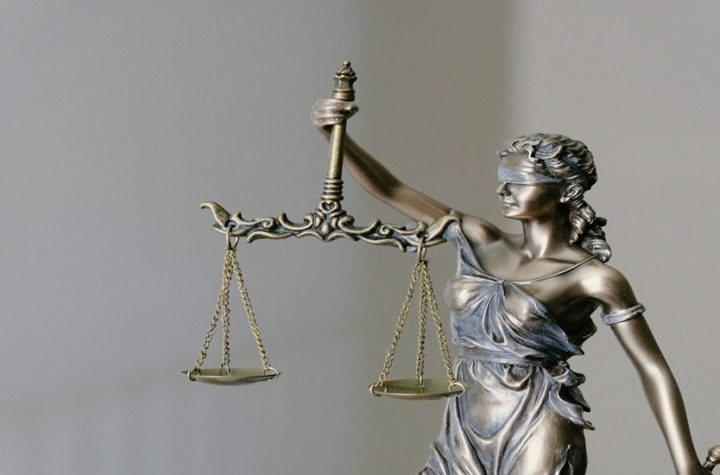
Pic Courtesy - UnSplash
In the realm of modern business, the incorporation of Artificial Intelligence (AI) has altered various elements of operations, most notably Intellectual Property. The integration of AI technologies and Intellectual Property has resulted in various advantages, allowing businesses to protect their ideas, trademarks, and patents more effectively than ever.
1. Helps in Patent Search: AI algorithms have significantly enhanced the process of patent hunting. These computers quickly scan huge databases of older patents, accelerating the search for prior art. Advanced machine learning algorithms may discover minute similarities and differences, enabling inventors and organizations in determining the novelty of their inventions before applying for patents.
Case Study: PharmaCorp, a pharmaceutical company, was developing a revolutionary cancer treatment medicine. Manually searching for relevant patents would have taken a significant amount of time and resources. PharmaCorp employed an AI-powered patent search engine to review millions of patents, detecting potential conflicts and opportunities. This allowed them to focus their R&D efforts on areas with a lower risk of infringement and potentially faster time to market.
2. Assists in Trademark Analysis: PharmaCorp, a pharmaceutical company, was developing a new cancer therapy medicine. Manually searching for suitable patents would have taken a lengthy time and required a significant amount of resources. PharmaCorp analyzed millions of patents using an AI-powered patent search engine, discovering potential conflicts and opportunities. This allowed them to focus their R&D efforts on areas with a lesser risk of infringement and possibly a faster time to market.
Case Study: FashionCo wanted to create a new clothing line with a distinctive logo. They used an AI-powered trademark analysis tool to discover potential trademark problems with existing companies, avoiding costly legal battles and launch delays. Furthermore, the technology provided insights into consumer preferences and possible market trends, allowing FashionCo to design a more successful brand strategy.
3. Facilitates Innovation: AI not only helps to safeguard intellectual property, but it also promotes creativity. Machine learning algorithms can spot patterns, analyze market data, and forecast future customer demands. By leveraging these information, organizations may modify their innovation strategy, create distinctive products, and stay ahead in competitive marketplaces.
Case Study: TechGen, a technology business, was struggling to come up with inventive solutions to complicated engineering problems. They used an AI-powered design tool to develop many viable solutions based on their specific requirements. This allowed them to investigate a broader variety of options and select the most promising design, resulting in considerable increases in product performance and efficiency.
4. Detects Probable Violation: AI systems are adept at detecting potential intellectual property breaches through continuous monitoring and analysis. These systems continuously analyze online platforms, marketplaces, and databases for evidence of illicit use or reproduction of protected intellectual property.
Case Study: MusicStream, a music streaming firm, was having trouble identifying and removing copyrighted content from their network. They set up an AI-powered content detection system that automatically examined uploaded music and reported potential copyright breaches. This allowed them to limit the danger of legal liability while maintaining a great user experience.
5. Notifies IP Infringements: Prompt detection of IP infringements is critical, and AI simplifies the process. Automated systems can quickly notify firms to potential infractions, allowing for prompt reactions such as cease-and-desist notices or legal action to protect the integrity of their intellectual property rights.
Case Study: SoftCorp, a software company, was concerned about unlawful use of its proprietary software. They used an AI-powered monitoring tool to scan the internet for potential infringements on their intellectual property. This enabled them to take immediate action against infringers, so preserving their intellectual property and maintaining their competitive advantage.
6. Protects Intellectual Assets: Overall, integrating AI into IP management guarantees that intellectual assets are adequately protected. By automating numerous operations, these technologies not only eliminate human error but also improve the efficiency and accuracy of intellectual property management, allowing firms to better protect their ideas, trademarks, and patents.
Case Study: ManCorp, a manufacturing company, was incurring considerable losses owing to product counterfeiting. They created an AI-powered product identification system to track and verify the authenticity of their items across the supply chain. This allowed them to reduce counterfeiting, safeguard their brand reputation, and ensure the quality of their products.
The combination of AI with Intellectual Property has enabled firms to navigate the complicated environment of patents, trademarks, and innovations more easily and efficiently. Companies that use AI technologies can strengthen their intellectual property strategy, secure their intellectual assets, and maintain a competitive edge in the dynamic global market.
As AI advances, its position in IP management will surely become even more important, redefining how firms protect, manage, and capitalize on their intellectual property and discoveries.




More Blogs
Expanding Globally: Navigating Challenges and Leveraging Strategies
7 Ways of Making Progress: A Startup Expert’s Guide
AI in the Insurance Business: Revolutionizing the Industry